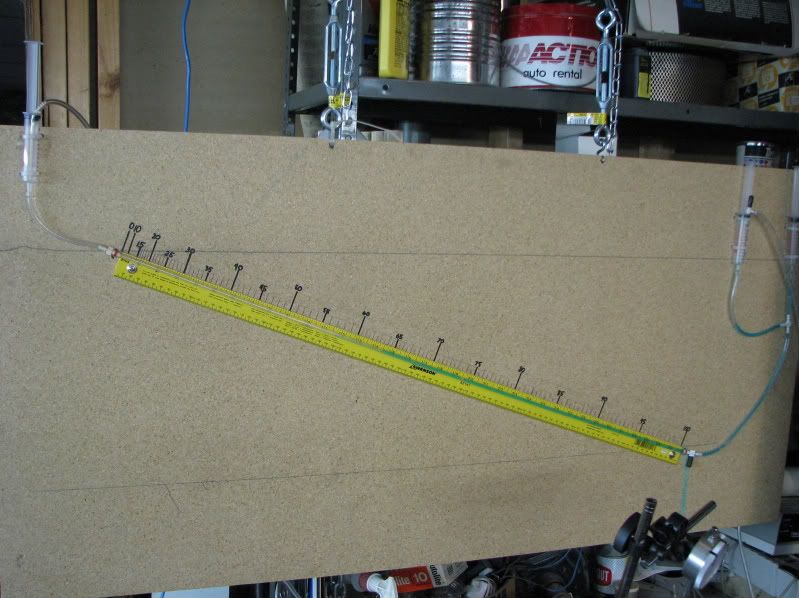Page 1 of 4

Posted:
Mon Feb 11, 2008 10:43 pmby bruce
Flowbench Utilities
This is a repost of 86rocco1's (Ed's) spreadsheet
Edited By bruce on 1202786179

Posted:
Tue Feb 12, 2008 8:22 pmby thomasvaught-1
I noticed it was gone for a few days Bruce.
Obviously You fixed it now. Thanks
Tom Vaught

Posted:
Sat May 03, 2008 1:25 pmby 86rocco1
I've made an additional to the orifice calculation sheet that lets you calculate the orifice size required to have a specific flow at the specified DP

Posted:
Thu May 08, 2008 10:59 pmby larrycavan
Thanks Ed. That's a nice feature to add.

Posted:
Sat May 17, 2008 12:10 amby 106-1194218389

Posted:
Sat May 17, 2008 5:14 amby 86rocco1
I think that 1.910 number in there is for Dwyer Blue gauge fluid, their red fluid is something like .826, water is 1.0, mercury is 13.54, oil vary a bit from 0.7 to 0.9

Posted:
Sat May 17, 2008 10:56 amby thomasvaught-1
Agree that the 1.91 number is from the SF Blue (VERY EXPENSIVE) fluid density.
I typically use the .826 fluid and use a higher inclined height. The 1.91 fluid density allows using the Dwyer #246 Inclined Manometer (6" height) height to test at a 50% higher flow range. A 300 cfm range becomes a 450 cfm range.
Tom V.

Posted:
Sat May 17, 2008 7:26 pmby 106-1194218389
Thanks you guys I appreciate that. Now I can feel better. I've been out to the Utah Grand Prix at the Miller Motor Sports Park. It is about 30 miles west of Salt Lake City. A great facility. I'll try to post some pictures.
John

Posted:
Thu Sep 18, 2008 10:28 pmby 106-1194218389
A question for Ed or anyone who knows the answer. On the spreadsheet Ed made to calculate the incline manometer specs what is the value I have highlighted in yellow? Is that the actual height of the inclined? Even though I input 12" as the scale vertical height it shows the delta P WC as 14.25". Can anybody give me a clarification there?


Posted:
Thu Sep 18, 2008 11:22 pmby 86rocco1

Posted:
Fri Sep 19, 2008 2:20 amby 106-1194218389
Thanks,
I see what that is now. Another question, is the Delta P actually on top of your test pressure? i.e. if your test pressure is 28" h2o and your delta P is 14.25" h2o then your motors have to pull 42.25" h2o? I just answered my own question. I went and stood and stared at my flow bench and went well DUH! The top chamber is the test pressure, i.e. 28" h2o and the lower chamber on the vacuum source side is the higher pressure which is the differential amount higher. That would be 28" + 14.25" = 42.25" h2o. At least that is the way it is if your are flowing the intake and since we are concerned with changing the flow direction on the inclined when we switch to exhaust then the pressure in the chambers must change to coincide but the delta P remains the constant then. Am I getting it yet? 
Thanks,
John

Posted:
Fri Sep 19, 2008 2:39 amby 86rocco1
I think you've got it.

Posted:
Tue Oct 28, 2008 3:00 pmby 106-1194218389

Posted:
Wed Oct 29, 2008 8:02 pmby 86rocco1
Yes, 100% on the scale would correspond to 14.25". So you take 14.25", the size of your orifice and your coefficient of discharge, plug those numbers into the orifice calculation sheet an that'll give you your calibration.

Posted:
Wed Oct 29, 2008 10:24 pmby 106-1194218389
Ed,
Take a look at mine. If it looks familiar it should I copied yours, I think it was. It is 36" long. The syringes are 5/8" id. It is 12" rise from line to line. How do I account for the tubing to the syringes or do I need to since they already will have fluid in them to the level lines.
Thanks,
John


